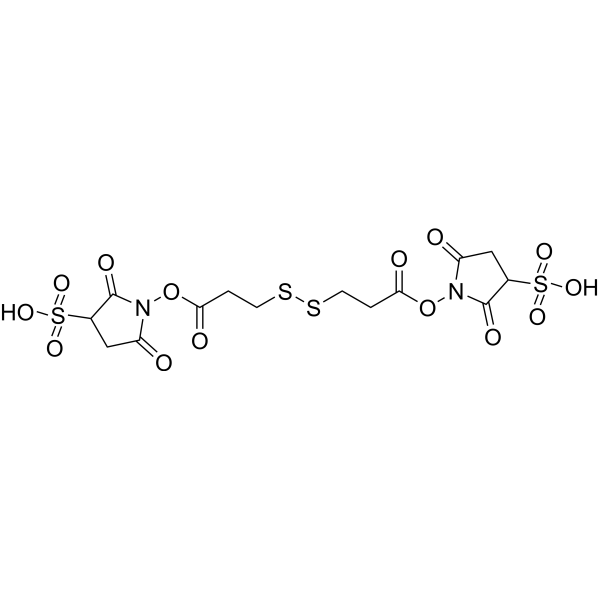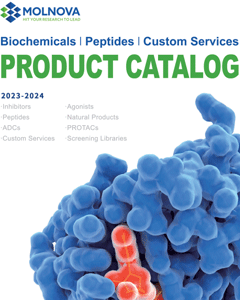
DTSSP Crosslinker
CAS No. 81069-02-5
DTSSP Crosslinker ( —— )
产品货号. M26673 CAS No. 81069-02-5
DTSSP Crosslinker 是一种可裂解的 ADC 连接体,可用于合成抗体药物偶联物 (ADC)。
纯度: >98% (HPLC)
 COA
COA
 Datasheet
Datasheet
 HNMR
HNMR
 HPLC
HPLC
 MSDS
MSDS
 Handing Instructions
Handing Instructions
| 规格 | 价格/人民币 | 库存 | 数量 |
| 2MG | ¥405 | 有现货 |


|
| 5MG | ¥543 | 有现货 |


|
| 10MG | ¥770 | 有现货 |


|
| 25MG | ¥1353 | 有现货 |


|
| 50MG | ¥1968 | 有现货 |


|
| 100MG | ¥2811 | 有现货 |


|
| 200MG | ¥4188 | 有现货 |


|
| 500MG | 获取报价 | 有现货 |


|
| 1G | 获取报价 | 有现货 |


|
生物学信息
-
产品名称DTSSP Crosslinker
-
注意事项本公司产品仅用于科研实验,不得用于人体或动物的临床与诊断
-
产品简述DTSSP Crosslinker 是一种可裂解的 ADC 连接体,可用于合成抗体药物偶联物 (ADC)。
-
产品描述DTSSP Crosslinker is a cleavable ADC linker and can be used to synthesize antibody-drug conjugates (ADCs).(In Vitro):The ADCs consist of an antibody to which the ADC cytotoxin is attached via an ADC linker .
-
体外实验ADCs are comprised of an antibody to which is attached an ADC cytotoxin through an ADC linker.
-
体内实验——
-
同义词——
-
通路Others
-
靶点Other Targets
-
受体Human Endogenous Metabolite| Microbial Metabolite
-
研究领域——
-
适应症——
化学信息
-
CAS Number81069-02-5
-
分子量564.52
-
分子式C14H16N2O14S4
-
纯度>98% (HPLC)
-
溶解度——
-
SMILESOS(=O)(=O)C1CC(=O)N(OC(=O)CCSSCCC(=O)ON2C(=O)CC(C2=O)S(O)(=O)=O)C1=O
-
化学全称——
运输与储存
-
储存条件(-20℃)
-
运输条件With Ice Pack
-
稳定性≥ 2 years
参考文献
1.Gryp T, et al. p-Cresyl Sulfate. Toxins (Basel). 2017 Jan 29;9(2).



 021-51111890
021-51111890 购物车()
购物车()
 sales@molnova.cn
sales@molnova.cn











